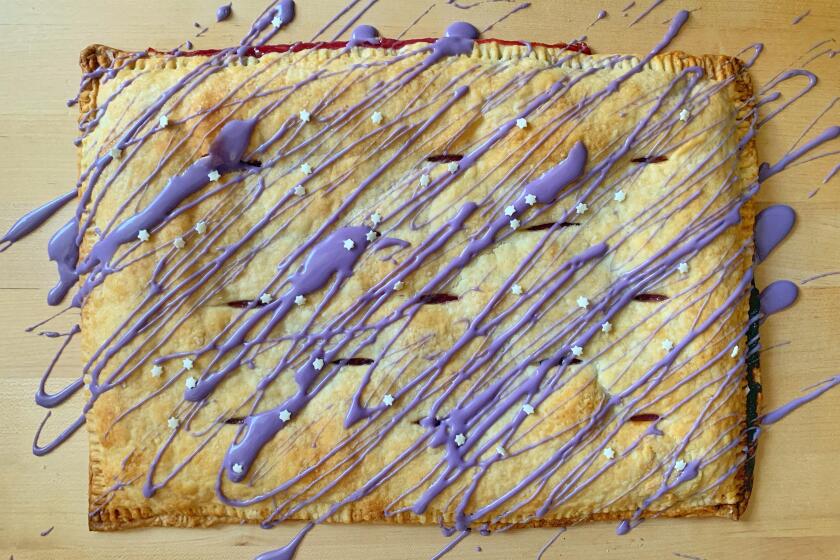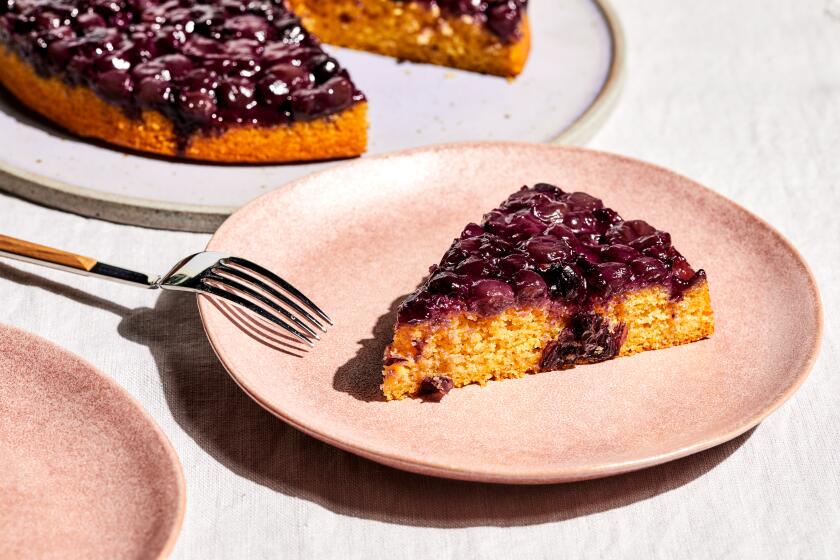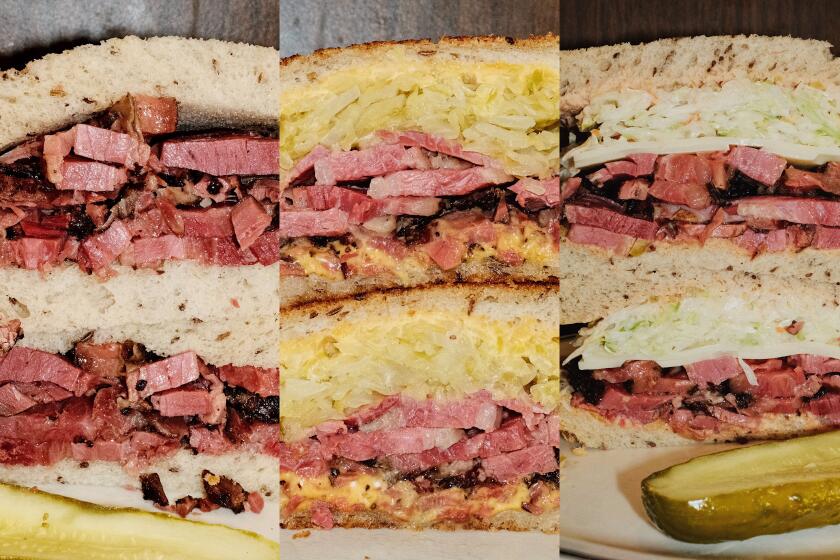This easy upside-down cake combines two surprising flavors
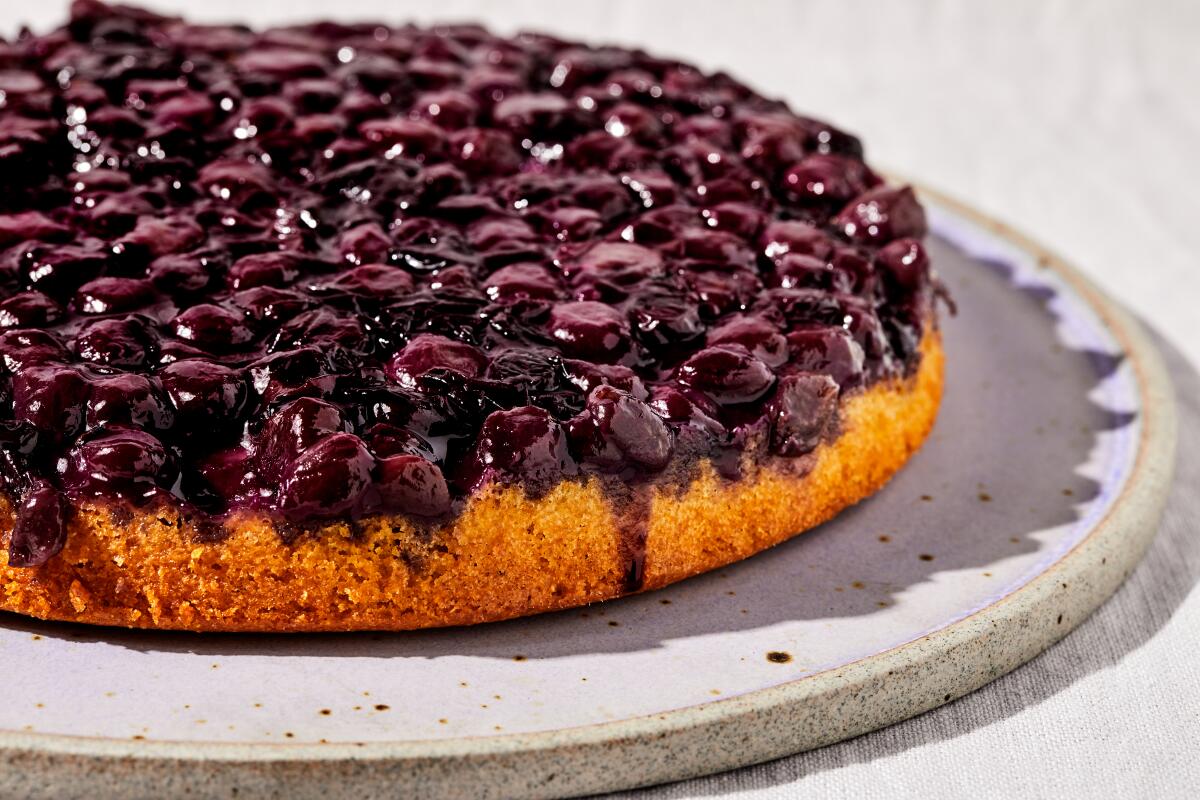
This in-between time of year in Southern California can be both wonderful and confounding. If you’ve ever spent any time outside of SoCal, September usually means the chance to pull on a sweater and enjoy the cooler weather. But as everyone who lives here (and is still wearing T-shirts and shorts) knows, that feeling is weeks away for us. On the upside, you get that unique California experience of seeing peaches and apples, corn and winter squashes — the mix of high-summer and classic autumnal ingredients — commingling at the farmers markets. And it’s so creatively inspiring that I set out to come up with a cake that captures the “season.”
I obsess over stone fruit all summer: peaches, cherries, tart purple and green plums. And when the temps finally drop, all I want is pears, apples and persimmons. But this liminal time allows me to focus on the lesser gods between those fruit titans of the main seasons. Figs and dates are sweet and floral and soft, while passion fruit and kiwis arrive to balance all those summer desserts or early fall baked goods with their tart brightness.
But my favorite is grapes. And not just any grapes. I’m talking about the perfumed, bloom-covered garnet Thomcords. A cross between Concord grapes and Thompson seedless, Thomcords are a California specialty that possess all the intense grape flavor of Concords but without the giant seeds. That means you can cook and bake with Thomcords with greater ease than Concords. I’m not a table-grape eater and rarely will snack on them (I have to be stuck somewhere with fruit salad as the only option for sustenance), but when Thomcords are in season, I eat them by the handful.
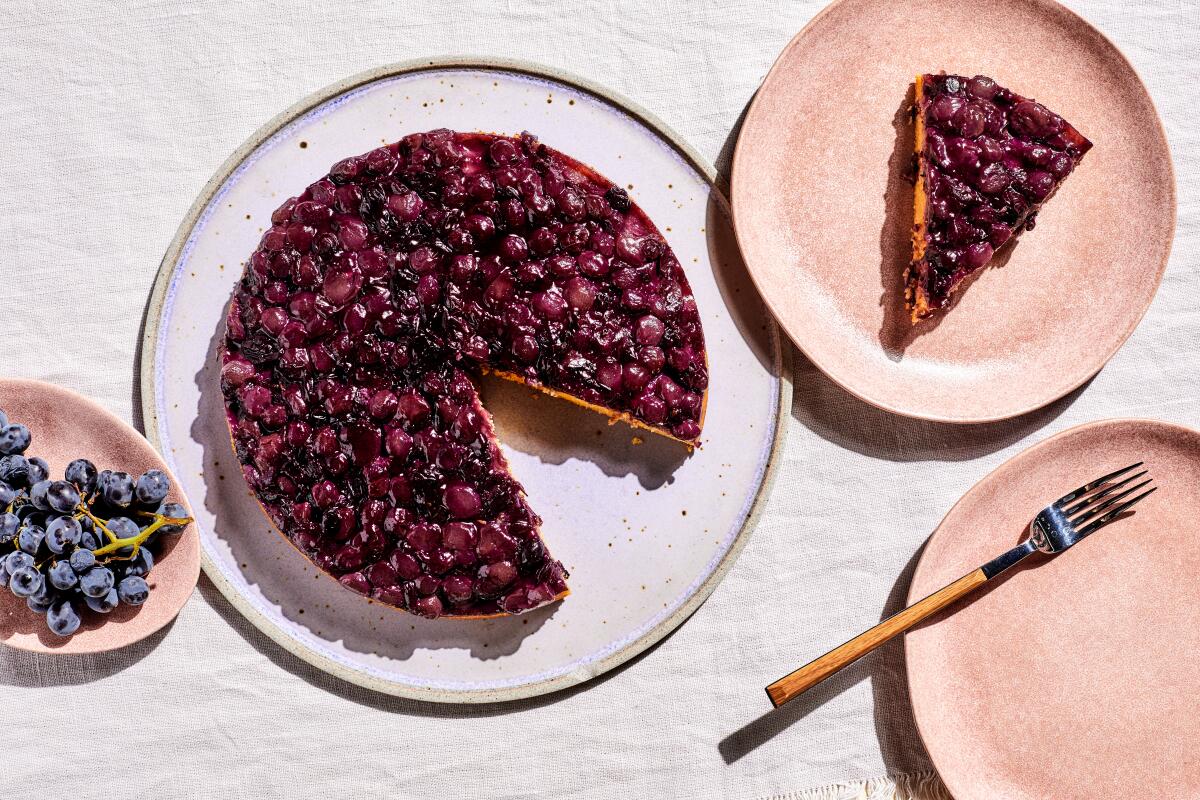
This year, I wanted to take my favorite grapes and incorporate them into a simple cake that I can eat for breakfast (the best time for cake). Instead of using a plain vanilla-scented batter, I wanted to make one with corn to play off that summer-to-fall quality. I tested several iterations of a corn cake using raw, blanched and even pureed corn, but all gave the cake an undesirable texture. Even though I wanted the fresh corn flavor of the season, I found that good ol’ cornmeal gives the best flavor without adding any weird texture to the cake.
As for the grapes, I tried mixing them into the batter both raw and cooked, but found that they either fell to the bottom or broke down into soggy pockets in the cooked cake — not exactly the celebration of the season I was hoping for. So I chose to make an upside-down cake instead, cooking the grapes until their juices were thickened and heady, then covering them with a simple corn-y cake batter. And though it might seem an easy task, as with all things “simple,” the small details made a bigger difference than you’d think.
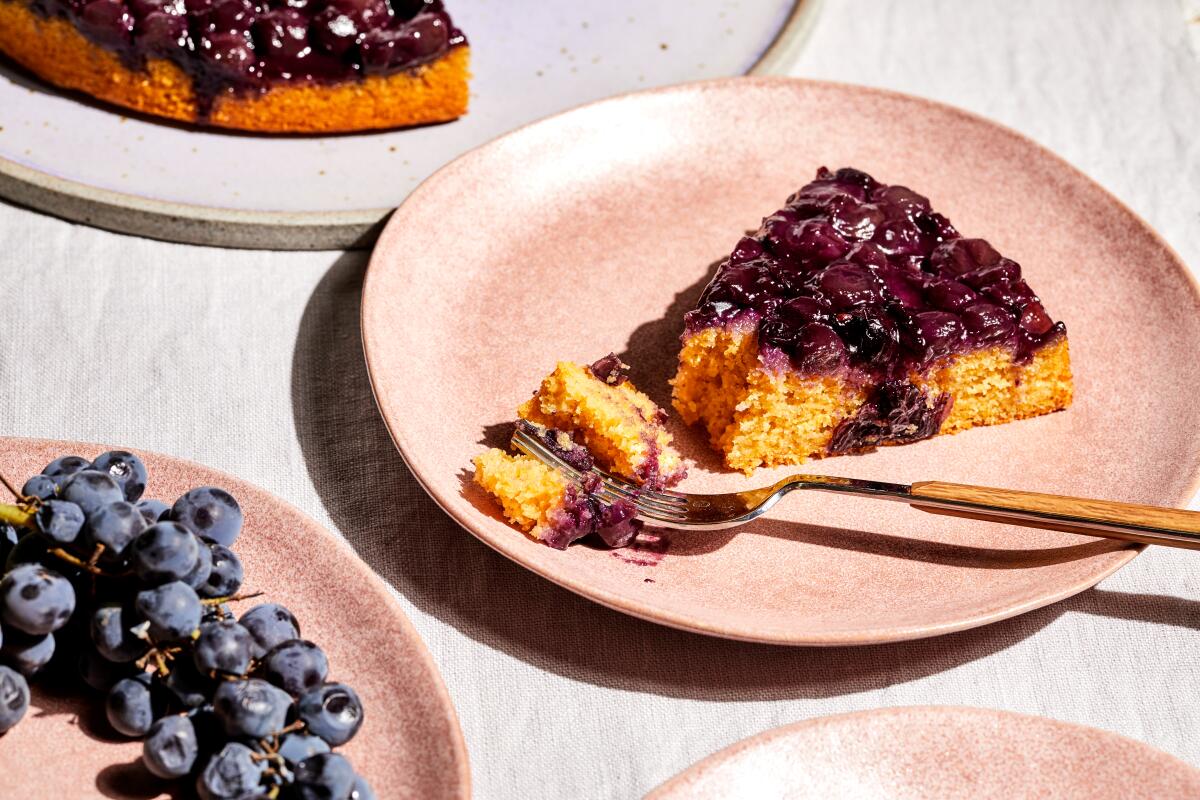
First, the grapes were lovely cooked down with just some sugar, but their juices were too loose, or worse, too sticky and jam-like to not become tough as fruit leather after baking. I found that adding a cornstarch slurry at the end helped to thicken the juices just enough while giving the fruit a smooth and tender quality. And instead of using water with the cornstarch, I found that whole milk — just 1 tablespoon — tempered the intensity of the cooked grapes and gave the lean, sweet fruit a little richness. The final key to the fruit topping was lemon zest — a small amount really woke up the grapes’ tart and aromatic flavors.
Then came the cake. I love really simple dump-and-stir cake batters, most of all because who wants to bust out the stand mixer when a bowl and a whisk will do? So rather than using a batter that required creaming the butter and sugar together first, I added melted butter and plenty of baking powder to give the cake the rise that creaming normally would. And rather than regular white granulated sugar I used light brown sugar for that molasses-like bitterness to balance the sweet corn and grape flavors perfectly.
Fragrant Thomcord grapes fill a thin and flaky tart inspired by Pop-Tarts.
But the real success of this cake is in how you treat the cornmeal. When you bake with cornmeal, the finished cake can be slightly crunchy from the coarse grains, especially in a cake batter like this that isn’t super wet. The key: Add the cornmeal to the wet ingredients first to let it plump up and absorb some moisture — like when you soak beans or rice before cooking — so that it bakes evenly, resulting in a tender cake with no crunchy bits of grain.
Other recipes for cornbread and similar cakes I had seen mixed the entire batter together to let the cornmeal sit, but then you waste the leavening power of the baking powder and soda because both are activated when combined with liquids. I simply mixed the cornmeal into the wet ingredients, let that sit for 15 minutes, then added the flour and leavening to keep the latter fresh and powerful to give proper rise to my cake.
The result was all I had hoped for. Tart, bright and jammy fruit sitting atop a sweet corn cake that was tender and rich but not heavy. I’ve been eating it as a handheld wedge for breakfast, in the afternoon for a pick-me-up, and serving it as a simple dessert after dinner parties, along with a single spoonful of unsweetened whipped cream. The grapes are a welcome change from the more familiar stars of summer and fall, a way to appreciate the fruit that ushers one season to the next.
Get the recipe:
Thomcord Grape and Corn Cake
More to Read
Eat your way across L.A.
Get our weekly Tasting Notes newsletter for reviews, news and more.
You may occasionally receive promotional content from the Los Angeles Times.
